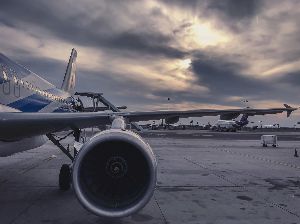Interstate Domestic Air Freight
Fast, secure and dependable air cargo across Australia
Same-Day vs Next-Available-Flight: Decision Tree and Use Cases

Author : Tyson Shipp
Domestic Air Freight Specialist contributing to hhiexpo.com.au. Tyson writes practical editorial insights to help Australian businesses move urgent shipments safely and on time across interstate air routes.
Most people outside this space think “urgent air freight” is one category. Inside industry, it splits into two behaviours that are financially different.
Same-day is a premium action.
Next-available-flight is a throughput action.
Both protect uptime. But they are not interchangeable.
Same-day is for situations where delay is already monetised. Where every hour is burning capital. A shutdown that has begun. A maintenance window that cannot slip. A compliance gate that must stay open. In that case, you pay whatever you need to pay because the cost of delay is bigger than the cost of uplift.
Next-available-flight is for situations where the risk is real, but not yet crystallising into loss. Production is still running. The workshop is still active. The rig is still producing. So the goal is to get the part on the next sector out, without overpaying for a premium uplift that’s not mathematically justified.
This is the decision tree:
Is loss already happening?
→ same-dayIs loss guaranteed to happen if arrival slips?
→ same-dayIs the risk still potential, not actual?
→ next-available-flightIs the part highly specialised, low-density, or critical path?
→ lean towards same-day
This is how real operators in mining, energy, offshore, aviation MRO, and defence make the call: same-day is not about speed, it is about damage control. Next-available-flight is about staying ahead of risk curves without triggering unnecessary spend.
It always comes back to the core logic of interstate domestic air freight.
You don’t pay for aircraft. You pay to control the financial shape of time.








